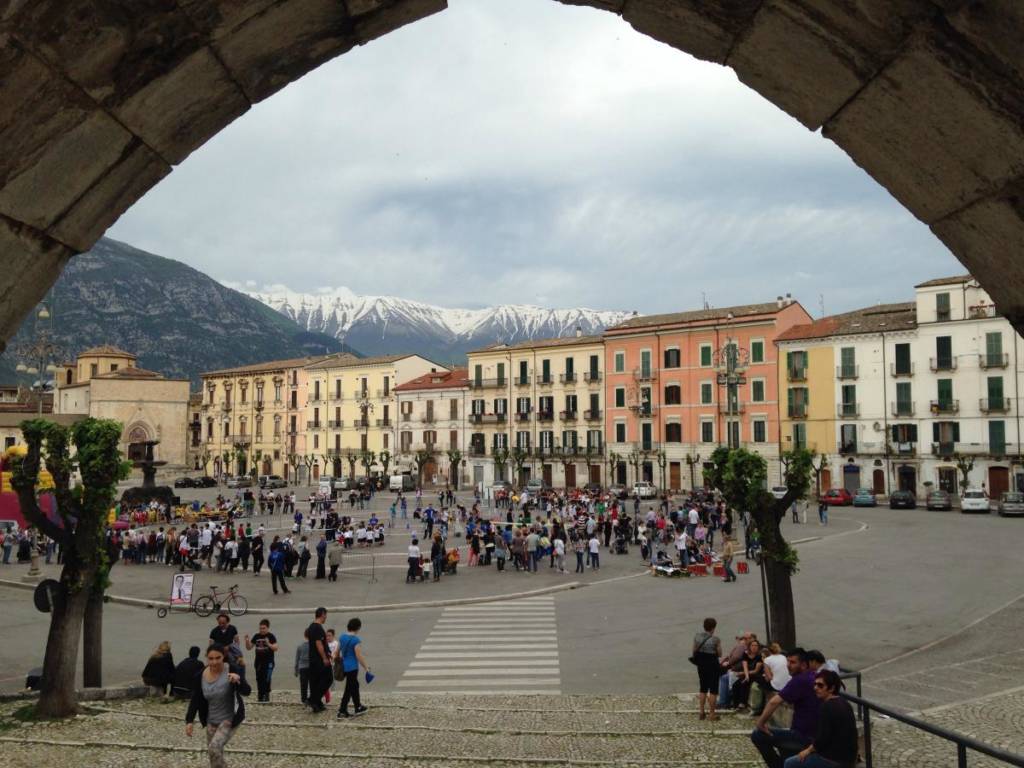Please enjoy these new poems by five new contributors to The Common.
Julia Pike
Scenes for Super Towers
Introduction by SCOTT GEIGER, photos by JAMES EWING.

A couple years ago, on the verge of the global collapse, structural engineer Guy Nordenson did an interview with me for a literary monthly, The Believer. The magazine’s title quote ran, “The tall building, as a type, is exhausted.” You could no longer put together a tall office building or a mixed-use tower in a new way, Nordenson felt. World Trade Center Tower One or maybe the CCTV Building in Beijing, depending on your architectural orientation, closed out the skyscraper play, at least in terms of engineering and architectural innovation.
These last two years, though, exotic forces in global finance have conspired to construct in the Manhattan street grid a radically new tall building typology. The super towers, or “billionaires’ beanstalks,” as New York Magazine’s architecture critic Justin Davidson described them, are stacks of full-floor loft apartments (sometimes duplexes) rising into the blue. The forthcoming 111 West 57th Tower, featured on its architect’s website, shows the sheer building arising from a tiny claw hold in Manhattan.
To realize such super towers, their developers and architects have to delicately escort them through New York City municipal agencies and community boards. They must also sell the apartment units, often to prospective owners who do not live in New York City or even in the United States. Architectural renderings do this work. These are digital collages of one or more real photographs, upon which is imposed a scintillating computer-generated image produced from three-dimensional architectural design software. There are whole design agencies, like rendering pioneers DBOX, who specialize solely in the production of these very high-resolution illusions for use in real estate marketing.
Over the summer I learned that Brooklyn architectural photographer James Ewing has regular commissions to document the urban fabric surrounding Manhattan commercial developments. He sometimes even photographs the open airspace around future super towers. To make such images, Ewing accessed the terraces and mechanical rooms of neighboring high-rise towers, waiting long hours for the weather to clear, the daylight or the darkness to settle just so. After studying architectural renderings for a few years now, I’ve concluded that their appeal comes not from their dazzling subjects but from the everyday real upon which the proposed architecture trespasses.
Ewing shot the images below to serve as backgrounds to architectural renderings, which will tease out a counterlife to the city. A knowing consciousness animates the photographs, I feel. His views frame a cumulative, sculptural Manhattan. No sign of street life. Instead, this subjectivity sees a geometric landscape of facades and windowwalls—each building nothing so exotic or radical as the crystallization of market forces past. Especially dramatic to see is the form of the cumulative city juxtaposed to the Hudson and East Rivers at its edge. To the subjectivity within these images, super towers feel only inevitable, the next phase in New York City’s continuous and speculative growth under the sky.
—Scott Geiger





Scott Geiger is the Architecture Editor for The Common.
Photographs by James Ewing.
Fargo: A Walkthrough & Discussion

(Attention: Spoilers Ahead!)
In Fargo, an unpredictable and manipulative out-of-towner named Lorne Malvo (Billy Bob Thornton) incites a string of murders in small-town Minnesota. Though thematically, tonally, and aesthetically based on the critically acclaimed 1996 Coen brothers’ film of the same name – fear not, the series preserves the film’s beloved dark humor and “you betcha”s – the Emmy-nominated FX mini-series introduces entirely new characters and plot. Many of these characters are unexpectedly layered, defying tropes of the idiot detective and the ruthless killer, while some minor characters fit comfortably in well-known molds. It is a credit to the expert writing and acting that even these characters – including Glenn Howerton’s artificially bronzed and tragically naïve personal trainer – are vibrant.
In the first episode, we meet life insurance salesman Lester Nygaard (Martin Freeman) – a doormat tread on by everyone, especially his wife. A chance encounter with his high school bully, Sam Hess (Kevin O’Grady), sends Lester to the hospital with a broken nose. There, he meets Malvo, a hitman with a severe haircut and black eyes, who chides Lester for quietly enduring emasculation and offers to kill Hess. Lester doesn’t say yes to the offer but doesn’t say no either, and the two part ways. Malvo stabs Hess at a strip club that evening. A few days later, a newly confident Lester strikes his wife dead with a hammer when she criticizes him. In a state of panic, Lester calls Malvo to help him deal with the body. First to arrive at Lester’s door, however, is Chief Vern Thurman (Shawn Doyle), there to question Lester about the Hess murder. When Malvo appears, he kills the chief with a shotgun. To avoid suspicion, Lester runs headfirst into a wall to knock himself out as if he too were a victim of whomever committed the other two murders.
Throughout the series, Lester must shed layers of scruples in order to evade capture and preserve his new alpha male persona. This transformation, guided by Malvo’s powerful influence, is the series’ thematic backbone, spawning ethical questions that haunt characters and viewers alike. From the beginning, Lester’s crimes are suspected by the pensive Deputy Molly Solverson (Allison Tolman), and she butts heads against the newly appointed chief. Luckily for Molly, she has Duluth Deputy Gus Grimly (Colin Hanks) on her side – eventually romantically, as well as in the line of duty. Thrown into the mix are the surly, bearded Mr. Numbers (Adam Goldberg) and the hulking, deaf Mr. Wrench (Russell Harvard), who have been hired by Minnesota’s Fargo-based organized crime organization – referred to as “Fargo” – to identify and kill the murderer of Sam Hess. This makes for a complicated game of cat-and-mouse where everyone takes turns as predator and prey.
The show is notable for its skilled acting, striking cinematography, and sharp dialogue that amuse and unsettle viewers. Fargo isn’t perfect – there’s an entire subplot that disappears without resolution or explanation – but the show is confident in a way that lends it a cinematic quality. Even though writer and creator Noah Hawley has described Fargo as a ten-hour movie, there are still ten distinct episodes – each named after a riddle or paradox – which allows for ten beginnings and ten endings. Knowing that our memories give preferential treatment to endings – whether it’s the last thing you read before bed or the final moment of an important relationship – the creators of Fargo have imbued the final scene of each episode with vivid thematic commentary on who comes out on top when some humans behave like beasts.
The last scene of the first episode – “The Crocodile’s Dilemma,” in which Malvo brings corruption to Bemidji – is of Molly and her father Lou, a former policeman, as they prepare to go ice fishing. Lou asks Molly to work as a hostess at his diner, since “people in this world are less inclined to shoot a hostess than, say, an officer of the law.” He’s not surprised, though, when Molly concedes that hers is a risky profession but she’s going to continue on with it anyway. The pair exchange “I love you”s, and Molly walks away, back to work. This scene is a warm blanket that comforts the viewer after an otherwise chilling first episode, providing hope that goodness will be restored and establishing Molly as true north on Fargo’s moral compass.
However, the next two endings, the final scenes of “The Rooster Prince” and “A Muddy Road,” provide no such comfort. Episode 2 ends with Mr. Numbers and Mr. Wrench dragging an innocent man across a frozen lake and lowering him head-first through a hole in the ice. While they ignore the man’s protests, the following lines from Eden Ahbez’s “Full Moon” are spoken in the background:
And in the evening
When the sky is on fire
Heaven and earth become my great open cathedral
Where all men are brother
Where all things are bound by law
And crowned with love
The scene is at once playful and eerie, presenting an auditory representation of utopia simultaneously with visuals representing extraordinary brutality.
The ending of Episode 3 showcases one Malvo’s techniques for destroying his hits. A sweating, pill-crunching supermarket magnate named Stavros (Oliver Platt) steps into a shower, over which scene, Malvo narrates the story of Moses, starting with his rescue from the Nile. When he reads the part where Moses kills an Egyptian man for brutalizing a fellow Jew, blood gushes out of the showerhead onto a horrified Stavros. Then, Malvo appears onscreen, smirking as he walks away from Stavros’s house and pulls a blanket over jugs of pigs’ blood in the trunk of his car. Clearly, Malvo is not a cookie-cutter bounty hunter – he enjoys subjecting his victims to theatric emotional manipulation.
After these endings, the viewer understands the extent to which darkness has infiltrated the world of Fargo and is alarmed by its atrocities. With these elements in place, Episodes 4–10 center on whether Lester will be punished for his actions, by Fargo, the police, or Malvo.
The final scenes of Episodes 4 and 5 emphasize Lester’s trouble. “Eating the Blame” ends with a simple moment of tragic comedy. In his desperation to escape Mr. Numbers and Mr. Wrench, Lester has punched a cop and sits in a holding cell. He is then joined by his pursuers, who tower over him and smile. In the next episode, Lester is hospitalized for a pernicious infection from the shotgun pellet lodged in his hand when Malvo shot the police chief in Lester’s living room. The episode ends as Molly opens the door to his hospital room and glares at Lester’s body, curled up in the fetal position and feigning sleep. This scene depicts two types of hunters, set apart by what motivates them. The predator, Lester, is driven by self-preservation, but the evolved hunter, Molly, is driven by empathy – she’s consumed by the need to right the wrong of her beloved mentor’s murder. Perhaps, according to this scene, the evolved hunter’s motivation gives her a strategic advantage and Lester will finally get his comeuppance.
However, Lester goes on the offensive in the next episode, “Buridan’s Ass,” and plants evidence implicating his brother Chaz (Joshua Close) in the murders of Lester’s wife and the Chief. The ending of this and the next episode (“Who Shaves the Barber?”) depict Lester’s and Molly’s reactions to the success of Lester’s plan – delight and panic, respectively. Here, crime is not met with justice, and these endings are the lowest point of the series’ moral crisis.
In the middle of Episode 8, “The Heap,” Fargo flashes forward a year. Lester is married to the beautiful, adoring Linda (Susan Park), owns Nygaard insurance, and accepts a Salesman-of-the-Year award with marked swagger. But will Lester really get away with it? In the episode’s closing scene, Lester’s security unravels when he spots a lighter-haired but unmistakable Lorne Malvo laughing at a hotel bar in Kansas City.
In the penultimate episode, “A Fox, a Rabbit and a Cabbage,” we find out that Malvo has been posing as a dentist for his next bounty. When Lester insists he knows Malvo, threatening to blow his cover, Lester opens the door for violence to reenter his life. He crosses his former mentor and sacrifices his new wife’s life to escape Malvo’s retribution, and it’s left to Fargo’s final episode, “Morton’s Fork,” to settle who comes out on top. Malvo and Lester die like animals – Malvo at the hand of policeman Gus Grimly, and Lester by falling through thin ice in a desperate escape from the authorities. The show ends with Gus, his daughter Greta (Joey King), and a pregnant Molly cozying up on a couch and watching TV. The timid Gus, now a mailman, has earned a citation for bravery, and Molly gets to be the chief of police.
The endings of each Fargo episode are skillful boiling points: they reach a level of dramatic intensity powerful enough to make a thematic statement, but stylistically quiet enough to avoid being gratuitous. Like that of the first episode, the ending of the finale is a warm, reassuring blanket. Though some might complain that letting the good guys triumph so wholly is a sentimental cop-out, in fact this resolution manages to be both satisfying and unconventional. The threat of Malvo – and his disciple, Lester – are defended by a nervous mailman and his pregnant, milkshake-loving wife. These two, apparently meek but surprisingly strong, are the ultimate top dogs. Their self-sacrifice, empathy, bravery, and neighborliness are realistically and entertainingly under siege in the series’ ten episodes – sometimes finishing with humor, sometimes with horror, but always distinctively Fargo.
Elizabeth Mutter lives in Amherst, MA.
Bar Poem
By TARA SKURTU

I’m here on the patio, no appetite,
drinking a salty margarita. I feel
my liver, ignore it like last night’s
glass of water. I’m tired of writing
you down when I should be writing
poems about place. Dusk hits beyond
the man playing the red accordion
on the corner, and the strays of Iași
bark out a score backed by dissonant
frequencies of the evening bells.
This morning I took a walk and found
a noseless man pumping gypsy love songs
on his accordion. I stared into the holes
of his face and thought about the girl
with the green ribbon around her neck.
Had you read the story backwards,
we might not have lost our heads.
It’s late. What time is it?
I ask a poet who isn’t you.
There’s time enough, he says.
Tara Skurtu teaches Creative Writing at Boston University, where she received a Robert Pinsky Global Fellowship and an Academy of American Poets Prize.
July 2014 Poetry Feature
Upcoming print issues of The Common will feature poems by Will Schutt, Patrick Pritchett, and Kevin C. Stewart.
Photographing the New Nature
By SCOTT GEIGER

We were back in the Hudson Valley, in the marvelous town of Beacon, to make some images of a new park on the solstice. I found Brooklyn photographer James Ewing stalking the faint pre-dawn, about 5:15AM. A golden haze that had built behind the Hudson Highlands, in an instant, crested over to illuminate this little riverfront peninsula. We scrambled to make the most of the sun, searching out the best views, the right moments. The whole Saturday passed this way, really, though with less urgency than those first minutes. All across Beacon’s Long Dock Park, in a bit of solar sport, we either laid traps ahead of or chased just behind the light.
A Motor-Flight Through France

A trailblazer among American women at the turn of the century, Edith Wharton set out in the newly invented “motor-car” to explore the cities and countryside of France. As the Whartons embark on three separate journeys through the country in 1906 and 1907, accompanied first by Edith’s brother, Harry Jones, and then by Henry James, Edith is enamored by the freedom that this new form of transport has given her. With a keen eye for architecture and art, and the engrossing style that would later earn her a Pulitzer Prize in fiction, Wharton writes about places that she previously “yearned for from the windows of the train.”
The Word and Its Afterlife
By AMYE DAY ONG

I spend an hour opening envelopes every day in the basement of the American Library Association. Past the freight elevator and the official mailroom with its mechanized sorting machines is a room that looks like a cage because of the metal fencing that covers its entrance from floor to ceiling. A door is built into the fencing and a paper sign reading “Do Not Close” has been affixed, tape looped through the wires so that it adheres to the back of the paper. This long narrow room is divided lengthwise down the middle by metal shelving containing what appears to be every archived publication the Association has ever produced. I do my work in the back corner at two tables covered in razor marks.
May 2014 Poetry Feature
It’s time for our monthly poetry feature! Today, we are publishing eight new poems from The Common print contributors.
When Not in Rome: Tips for Touring Middle Italy

Getting Around:
When your cousin offers to meet you at the airport and drive you to Abruzzo, don’t even pretend to defer. As you will learn from the passenger seat, to say “driving” in Italy is to say “a lot of close calls.” A tunnel on a two-lane road may admit just one car. Passing’s no fun senza risk. In small towns, main roads are closed on Sundays so neighbors can chat in the street. Memorize multiple routes.









